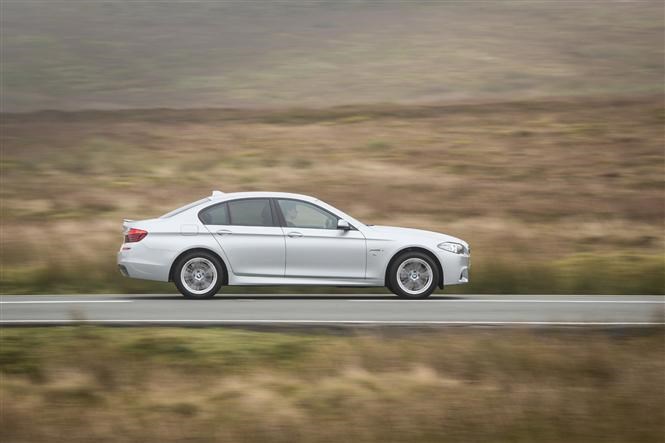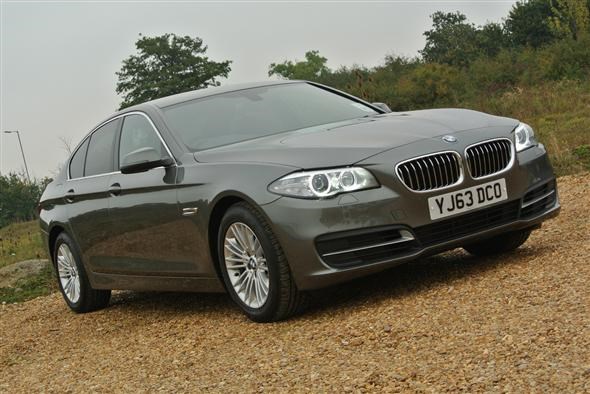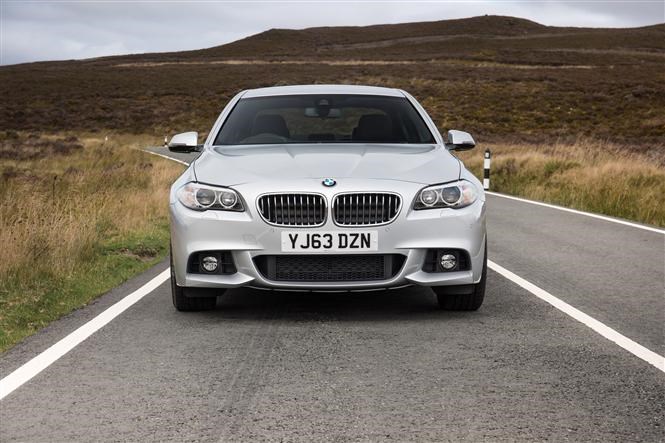The company car market is full of default choices, all the way through the model-range spectrum – that’s why you see so many Fiestas, Golfs, Insignias and 3 Series’ on our roads. Oh and the 5 Series of course. If you can stretch to a full-size executive motor you can bet your bottom dollar the first place you’ll look is BMW’s 5 Series configurator page.
With good reason too; ever since the third generation was unleashed to those wishing to lease in 1988 the model has impressed with its range of petrol and diesel engines, relatively low running costs, spacious cabin and excellent driving dynamics.
The latest model, arriving in the UK in 2010, has continued the trend and has become so efficient that it has parsimonious qualities better than cars half its size. In fact, if your fleet manager will release the funds, you could actually save money by buying a BMW 5 Series over some smaller, less powerful and less luxurious choices.
You could say the BMW 5 Series is having your cake and eating it. And going back for second helpings.
.jpg)
To get to such a sweet sweet spot in the range though you’ll have some work to do – in recent years the 5 Series range has grown almost as much as the American’s average waistline.
There’s now three bodystyles to choose from; a conventional saloon, a lifestyle rather than load-lugging Touring (estate) and the blown-up with a bicycle-pump 5 Series GT. The latter is meant to offer more interior space and a higher seating position with a dash of added style.
Unfortunately it looks awful, so if you want practicality stick with the Touring and for those concerned with image the sleeker saloon is a far better choice.
.jpg)
Once you’ve recovered from the shock of seeing a 5 Series GT for the first time, it’s time to work your way through the engine range, of which there are ten – including a hybrid model.
We’ll discount this one straight away, as though a Hybrid makes sense on paper for company car drivers; it is claimed to achieve over 40mpg and emit under 150g/km despite its 302bhp straight six petrol engine and can accelerate from 0-62mph in less than six seconds.
Problem is it costs just under £50k.
Which leaves the four other petrols. They’re all great units, with an even spread of power – and in the case of the V8 550i an over-indulgence in horsepower – mated to competitive fuel economy. The most efficient is the 2.0-litre 520i which emits just 139g/km of CO2 (when fitted with an automatic gearbox) and can return up to 47.1mpg.

While it might sound good enough to feature highly on your shortlist there is something of an elephant in the room – it costs over £1,000 more than the similarly powerful but more economical and less polluting 520d diesel.
For years it’s been the 520d that’s appeared at the top of company car wish lists, its current 119g/km CO2 output (which means a 19 percent BIK tax band for the 2014/15 tax year) and possible 62.8mpg combined fuel economy claim seemingly without equal. It would have been easy for BMW to rest on its laurels and continue hoovering up customers with it.
But in 2013 all that changed and the German firm introduced the 520d’s worst nightmare – the 518d. It’s the same engine as fitted in its bigger brother, but the 2.0-litre diesel has been down-tuned from 181bhp to 141bhp and torque slips from 380Nm to 360Nm.
Fuel economy and CO2 emissions are the same as the 520d but unsurprisingly the 518d is slower from 0-62mph, but the midrange still feels strong so unless your commute involves regular traffic light Grand Prix there’s no reason to worry about any missing performance.

So it all comes down to the P11D price and your company car allowance.
As the entry-level SE is the lowest price of them all, it’s the model to opt for – and since 2013 all 5 Series get BMW Business Navigation and sat-nav plus Xenon headlights as standard. The cup holders were enlarged at the same time.
Verdict
If you’re having to tighten your belt then the 518d SE saloon is a great choice; it looks great, drives well and with a P11D price of only just over £30,000 for the six-speed manual it’ll prove popular with fleet managers and users alike. This car (with no optional extras) will cost you £95.67 for the 2014/15 tax year.
However there’s no getting away from the fact the 520d is equally efficient yet faster, and for those spending so much time behind the wheel its £31,910 P11D price might just be money well spent. When it comes to tax, the 520d (again with no options added) will cost £101.04 a month, only £5 more than the 518d for the 2014/15 tax year.





